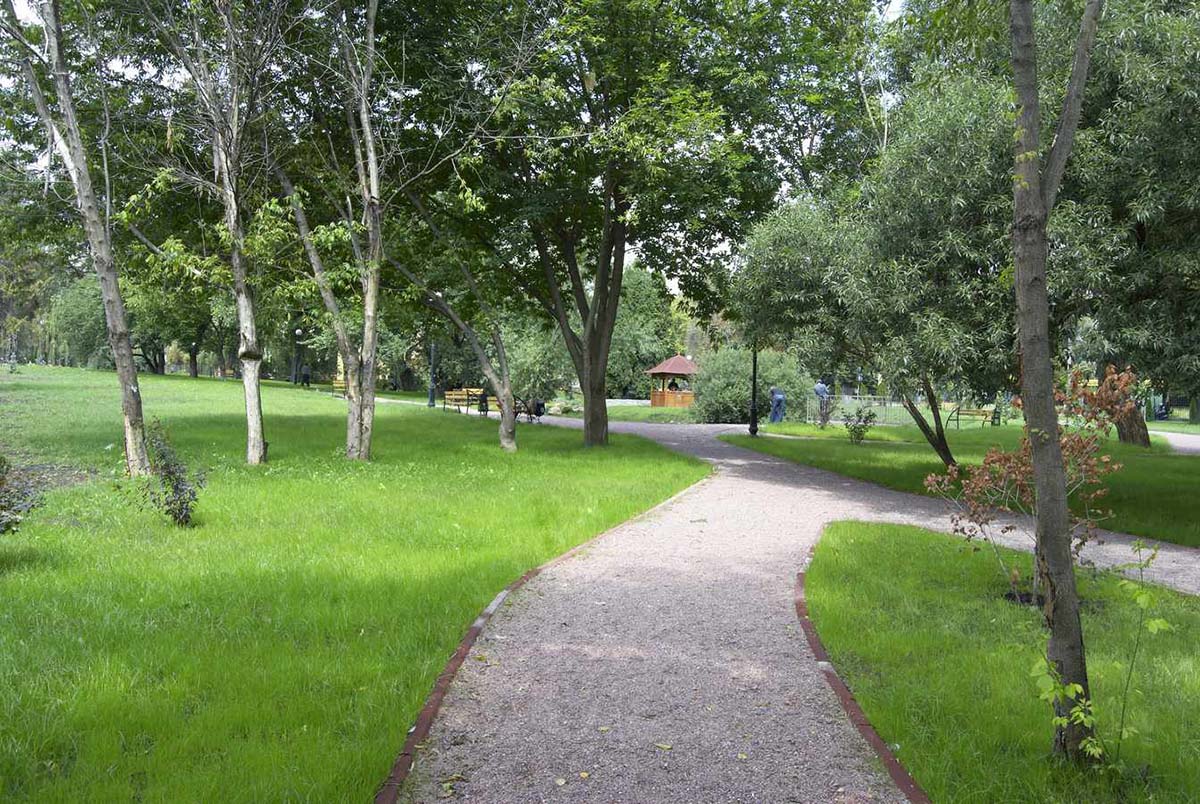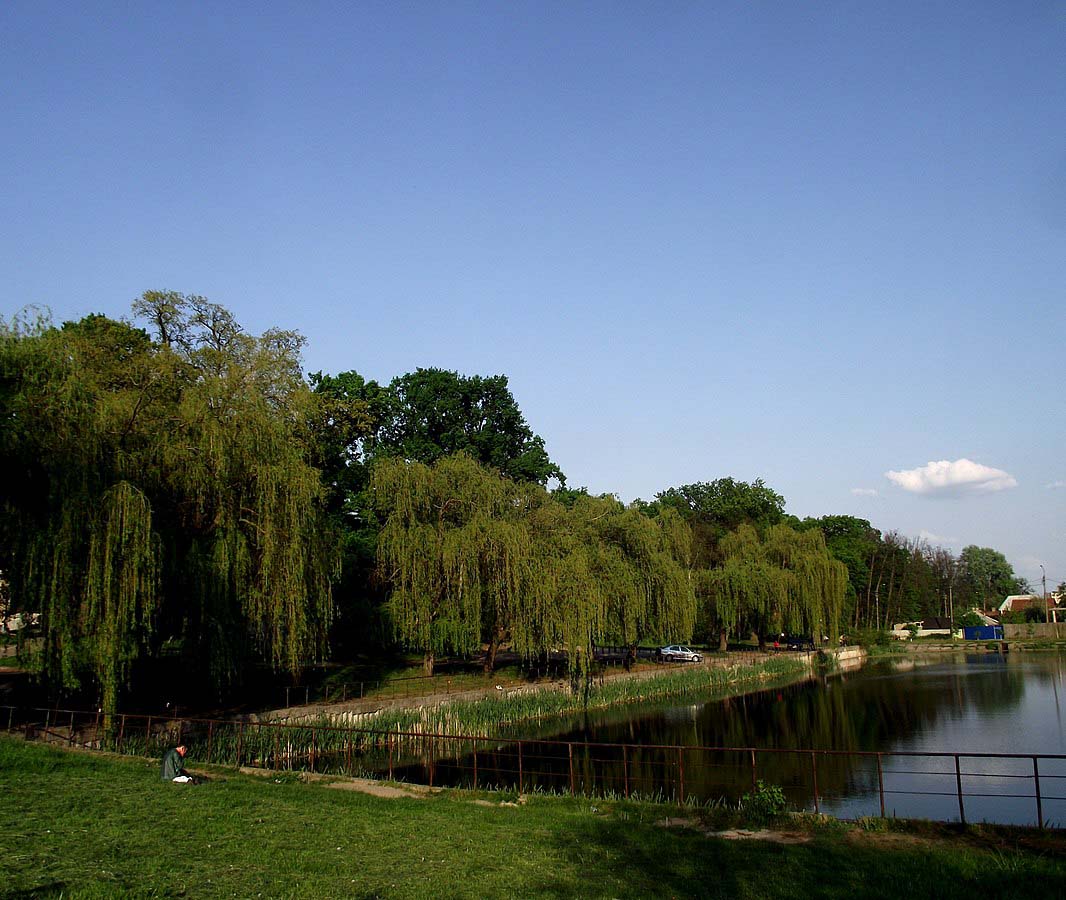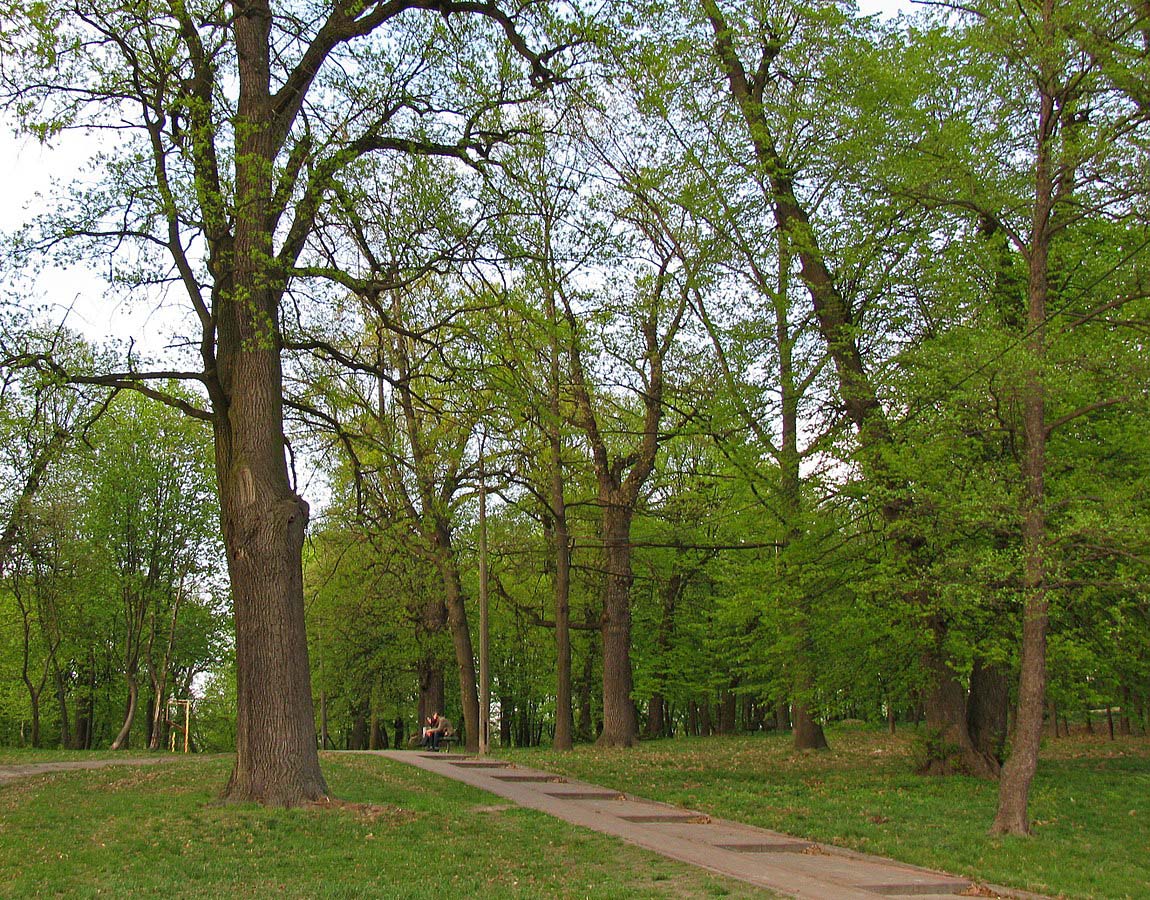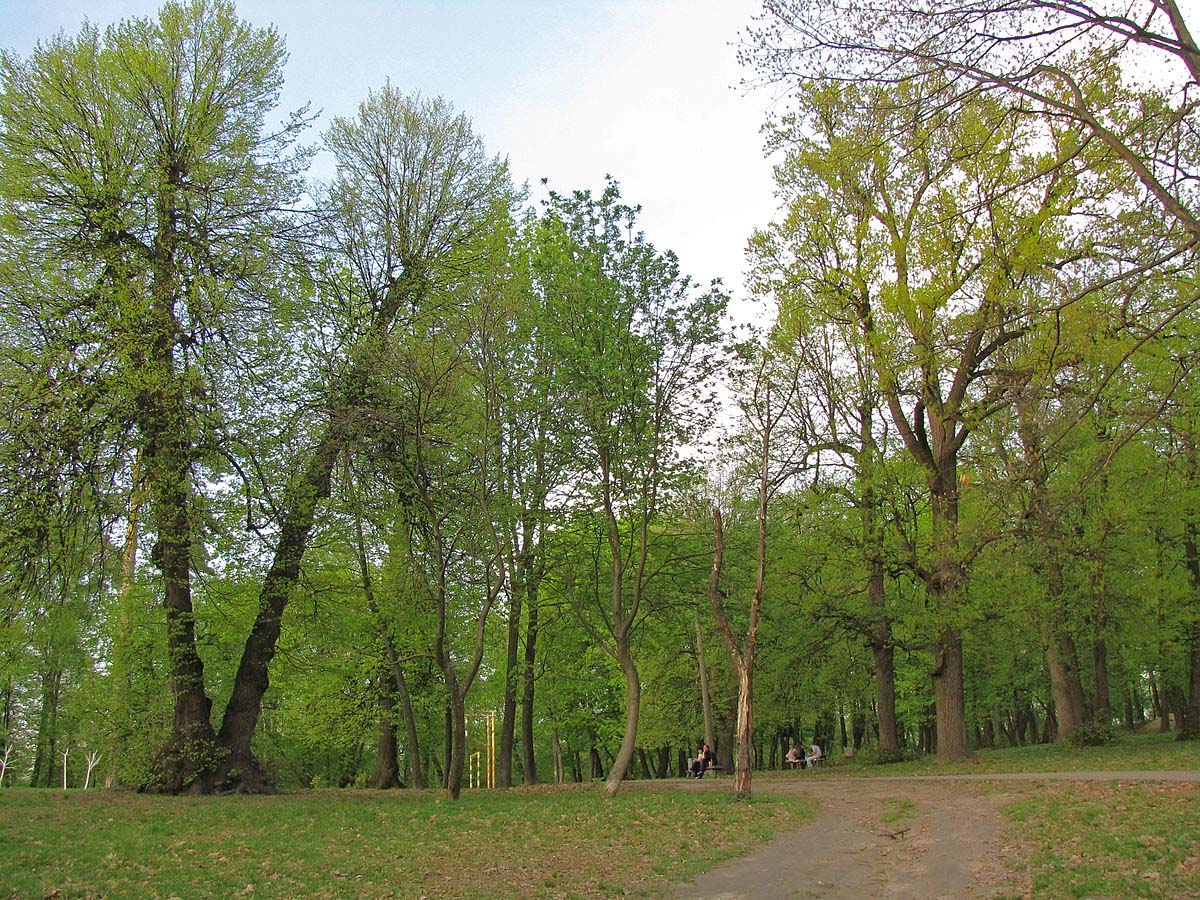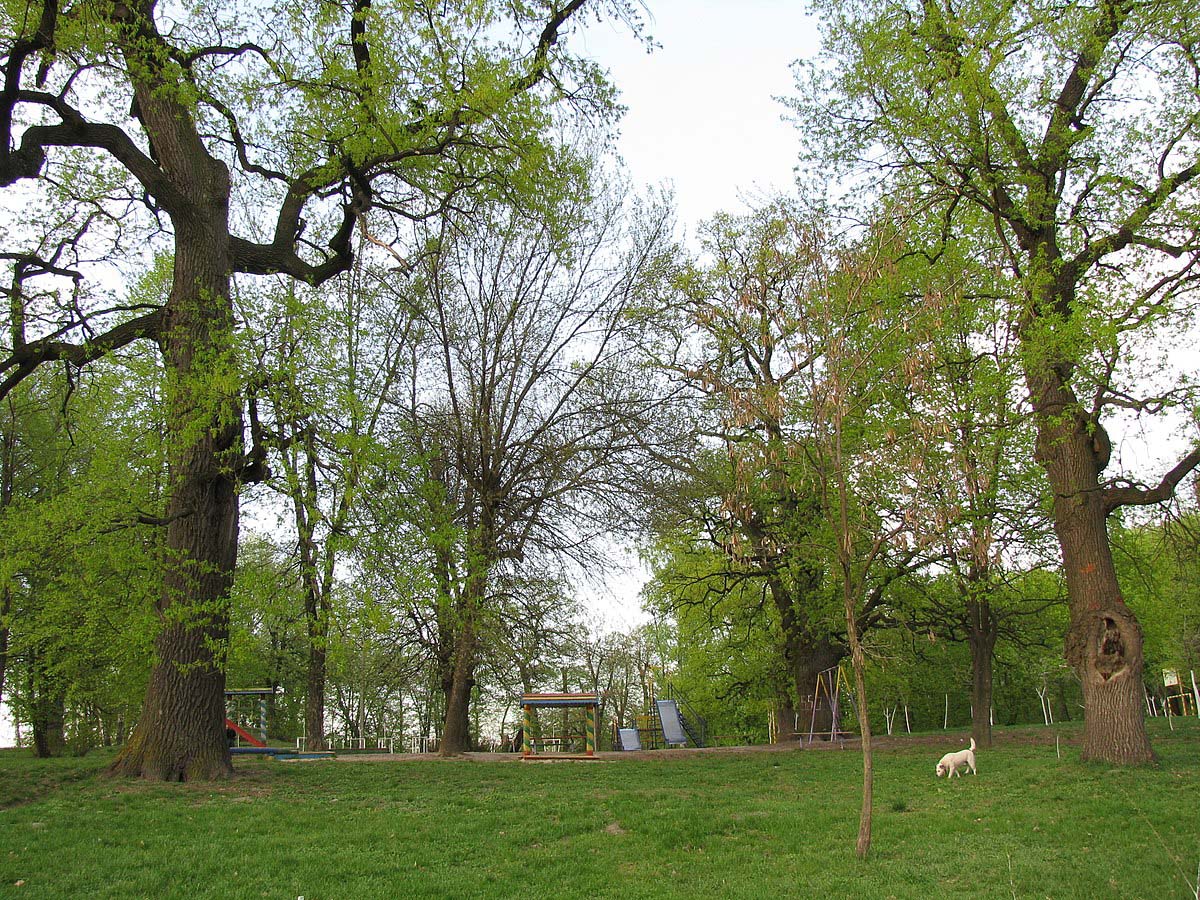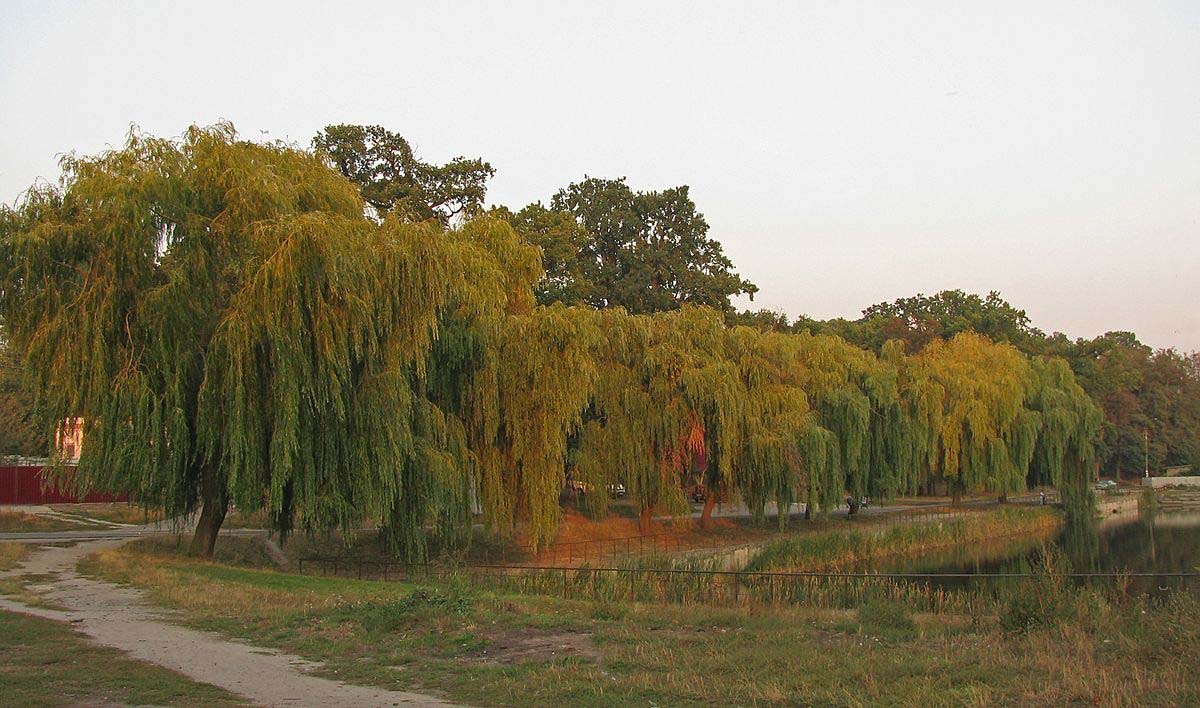The park received the status of a park-monument of landscape gardening art of local importance by decision of the executive committee of the Kyiv City Council dated March 20, 1972 No. 363 with a total area of 14 hectares. By decision of the Kyiv City Council dated February 17, 1994 No. 14, the area of the park was reduced by 6.7 hectares.
The park is part of the Kin Sadness tract, in which country estates were located in the 12th century. At the beginning of the 19th century there was a dacha of General Begichev, in the 1830s – the Lukashevich estate, at the end of the century the area belonged to the famous Kyiv book publisher Stefan Kulzhenko (his publishing house was considered the best in the Russian Empire). Therefore, another name for this area was widespread among the people of Kiev – “Kulzhenko’s Dacha”. The mother of Hetman Ivan Mazepa, Abbess of Voznesensky, Florovsky and Brotherly monasteries Mary Magdalene also made her contribution to the development of the tract . Indeed, in 1659, Kin-Sadness and the adjacent Priorka were transferred to the Brotherly Monastery. Living in 1859 on Priorka (now Vyshgorodskaya, 5), in a house that belonged to Varvara Matveevna Pashkovskaya (sister of the Ukrainian writer S. Loboda), Taras Shevchenko loved to walk in Kin-Grusti.
Wilhelm Krister (now this place is called Kristerova Gorka Park), a Saxon who In 1850 he bought about 40 hectares of forested area from Prince Esterhazy. Founded the company “Gardening and seed farming. V. Christer”, which became famous far beyond the borders of Kyiv. He planted a magnificent garden with nurseries for fruit trees, vegetables and flowers. Already at the beginning of the 20th century, the company sold more than 100,000 ornamental trees annually. After Christer’s death, the business was continued by his sons Julius and Edmund. The son of Julius Vasily, together with the sons of Kulzhenko, were able to protect these places from the destructive tornadoes of the civil war. It was only in the 1920s that the entrepreneur was repressed, and his garden was nationalized and turned into a gardening farm.
In recent decades, the area of the park has decreased significantly due to the alienation of part of its territory for the construction of buildings for the Institute of Gerontology of the National Academy of Sciences of Ukraine, the Institute of Endocrinology of the Ministry of Health and a parking area for trolleybuses (the final stop of routes No. 6, 18 and 32).
Where did the park get such an unusual name – Kin-Sadness?
The name of the park is associated with the events of 1787, when on the way to Crimea the Russian Empress Catherine the Second and her favorite, Grigory Potemkin, stopped in Kyiv. Since the local authorities did not receive the queen very pompously, they decided to compensate for the mistake with a picnic on the outskirts of the city. In a vast clearing framed by oak trees, tents were pitched and a party was held that lasted several days.
After one of these feasts, the queen decided to take a walk along the ponds that abounded in the area, taking Potemkin as a travel companion. The prince was out of sorts after the night’s feasts and suffered from a headache. Catherine felt great and enjoyed admiring the beauty of the ponds with weeping willows on the banks. Trying to somehow stir up the gloomy companion, she said a phrase that went down in the history of Kyiv: “Gregory! Stop being sad. Look how beautiful it is all around!”
In Kinh-Grust Park, the forest type of landscape landscapes predominates; small areas are occupied by park (1.55 hectares), meadow (1.7 hectares) and garden (0.56 hectares) types of landscapes. In total, 31 species of woody plants grow here, among which the heart-shaped linden predominates.
The greatest value in the park are the remains of the old forest – the trees in the part of the park adjacent to Kobzarskaya Street. These are mostly old oaks (several dozen), less often – linden and pine trees. The oak trees are over 200 years old, reach 30 meters in height and have a trunk diameter of up to 150 centimeters. Old lindens are slightly lower – up to 25 meters, with a trunk diameter of 95-100 centimeters. Particularly noteworthy is the old linden tree, which has three trunks (the diameter of each is 50-60 centimeters), and below there is a common trunk with a diameter of up to 3 meters and a circumference of about 9 meters. The tree has a living, developed crown. In the higher part of the park there are old pine trees with powerful column-like trunks 35-37 meters high and 90-100 centimeters in diameter, more than 150 years old. Among the valuable wood species, it is worth noting the group of middle-aged northern (red) oaks, which bear fruit abundantly.
In general, the part of the park located near Kobzarskaya Street consists of sparse old and middle-aged trees on a cover of grass grass, dominated by broom. In some places, forest plants have been preserved – European hoofweed, short-legged forest grass, and forest chickweed. The elevation is dominated by Norway maple plantations with the presence of oak, elm, and occasionally cherry trees. Herbal the cover in them is poorly developed.
In the part of the park adjacent to Soshenko Street, there are no old trees (although they certainly were here earlier, since they are on the adjacent estates). Middle-aged and young birches, poplars, and maples predominate here; there is a group of older aspens. There are also remains of an old garden.
Where is Kin-Sadness Park?
Kobzarskaya street, 41
